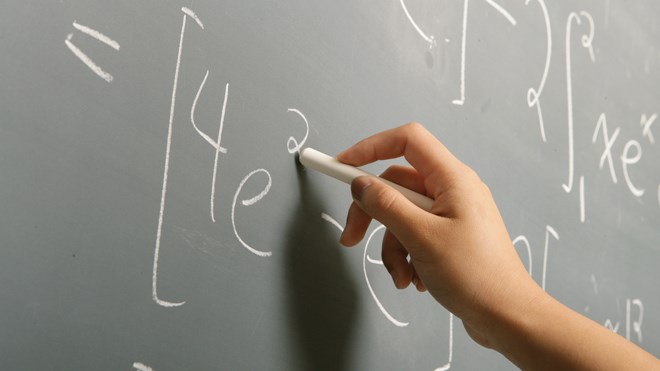Like many reporters, math has never been my thing. We even have a joke about it in the industry for when a journalist invariably makes an arithmetic error: reporter math, we call it.
Apparently, almost half of children in Ontario are familiar with reporter math, if the results from the most recent standardized testing can be believed. Last week, the province announced it was going to start reviewing the Ontario school curriculum after some truly dismal results: Only half of Grade 6 students met expectations and only 62 per cent of Grade 3s.
These results follow a pattern that a 2015 report from the C.D. Howe Institute says is happening across Canada.
Does this surprise me? No, not in the least. I have two children, one nearly 16, the other nearly 12. What this means is, I’m no stranger to helping a student or two with math over the years.
Parents like me, and even a teacher or two I’ve spoken to, suspect the problem isn’t with teachers or schools or students, but with the Ontario math curriculum itself.
The math professor who wrote the C.D. Howe report (“What to do about Canada’s declining math scores”) thinks the curriculum is a problem too.
In 2005, Ontario adopted a “discovery learning” approach to math. On paper, discovery learning sounds fine: the basic idea is that people learn better by doing, so students should be taught the tools to solve a problem and then be left basically on their own to muddle their way to the correct answer.
Discovery learning really took off in the 1960s and despite its popularity, there’s apparently considerable divide among academics about how well it works.
From my experience, and that of other parents, the answer is: Not that well.
Anna Stokke, the math prof who wrote the C.D. Howe report, doesn’t think so either and the results of standardized testing in provinces that implemented a discovery model seem to bear that out.
Where discovery math is instituted, test scores fall.
Like I said, on paper it looks good. Discovery recognizes not all students learn the same way and attempts to equip them with the tools to solve problems on their own. Great.
The problem is with how it works in practice. That’s the rub.
Tools only work in the hands of someone who knows how to use them. My children have been taught so many “tricks and tips”, they’re never sure which tool to use, and consequently have no idea how to solve a problem.
This is what happens when curricula are written by philosophers of education, but not vetted by actual people who live in the real world.
Where the discovery math curriculum breaks down are the basics, like multiplication. Being able to multiply is not just useful in math class, it’s something most of us do every day without even thinking about it.
The reason we use it daily without much thought is that we were forced to memorize multiplication tables. If you know the tables up to 12, by heart, you can then divide with ease.
If those tables aren’t in your head, every new concept, starting with division, becomes increasingly difficult to master. It doesn’t matter how many tools you’ve been given, if you can’t swing the hammer, it’s useless.
As parents, my wife and I aren’t alone in this. We hear from other parents who are equally frustrated.
When you’re introducing young students to math, trying to engage them by making it enjoyable is a great idea. But that’s for younger students. By the time children are in the higher grades, when math really gets challenging, making it fun isn’t much use anymore.
Here’s the thing, math class needs to encompass all types of learners. Those children who have a facility for the subject tend to be interested anyway, because they’re already good at it. If those students choose a career path that requires math, they’ll pursue the higher order arithmetic they need.
But what about those students whose life path is taking them in a different direction, into the arts or into journalism, for example?
Those students still need math, don’t get me wrong. Even those of us not in technical or scientific careers use math nearly every day. We use it when we’re carving up our paycheques to ensure we can pay our bills. We use it when we’re trying to figure out the best deal at the grocery store.
In other words, most people rely on the core math concepts: addition, subtraction, division and multiplication, and occasionally fractions and a bit of algebra.
There’s no reason the “learn by doing” tenet of discovery math can’t be paired with a back-to-basics approach, so students have a firm foundation in core math skills and the benefits of self-reliant problem-solving.
That way, fewer students won’t be left behind by a curriculum that’s too heavy on philosophy and too light on practicality.
Mark Gentili is the managing editor of Northern Life and Sudbury.com.
